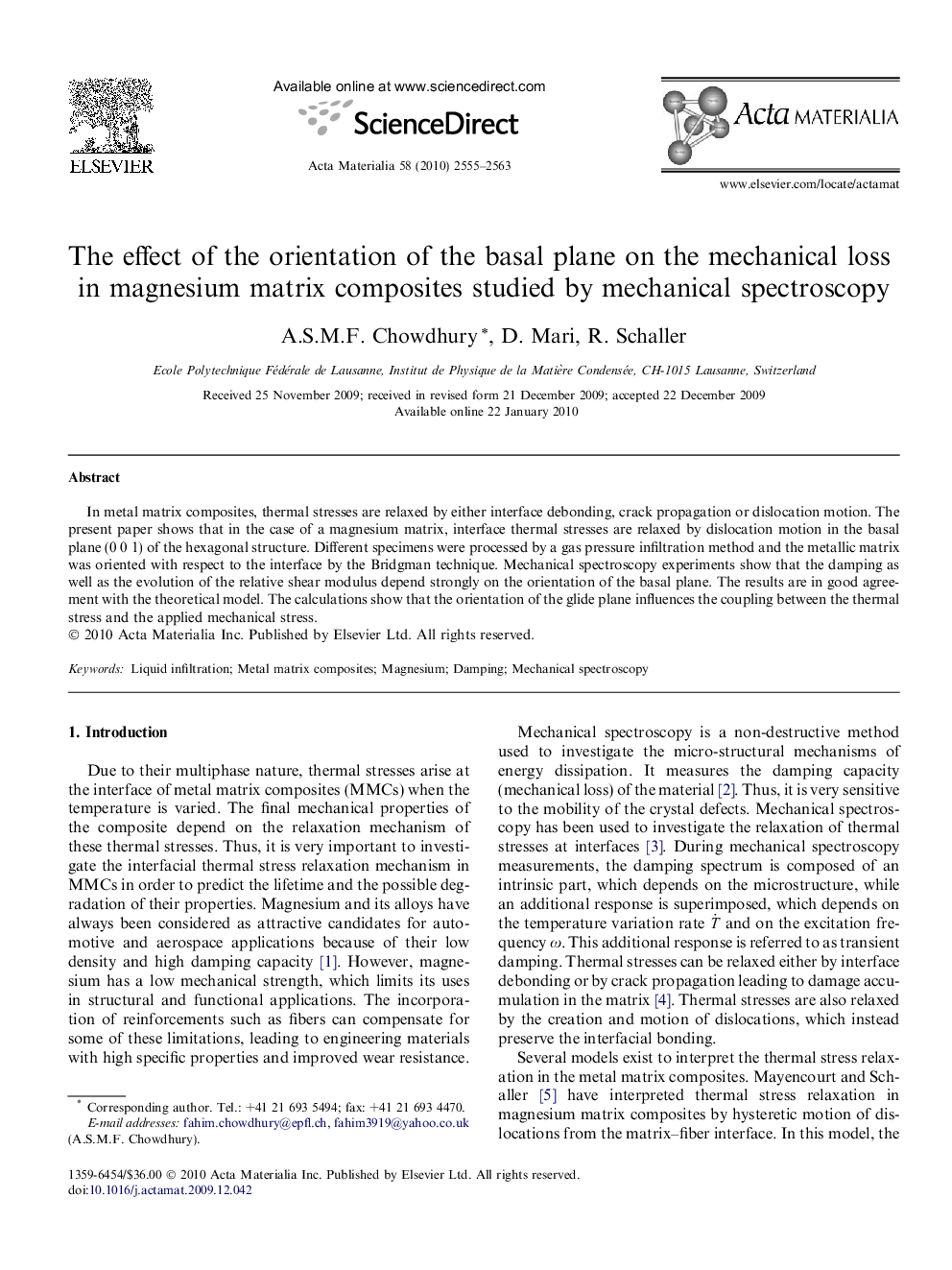| Article ID | Journal | Published Year | Pages | File Type |
|---|---|---|---|---|
| 1448940 | Acta Materialia | 2010 | 9 Pages |
In metal matrix composites, thermal stresses are relaxed by either interface debonding, crack propagation or dislocation motion. The present paper shows that in the case of a magnesium matrix, interface thermal stresses are relaxed by dislocation motion in the basal plane (0 0 1) of the hexagonal structure. Different specimens were processed by a gas pressure infiltration method and the metallic matrix was oriented with respect to the interface by the Bridgman technique. Mechanical spectroscopy experiments show that the damping as well as the evolution of the relative shear modulus depend strongly on the orientation of the basal plane. The results are in good agreement with the theoretical model. The calculations show that the orientation of the glide plane influences the coupling between the thermal stress and the applied mechanical stress.
